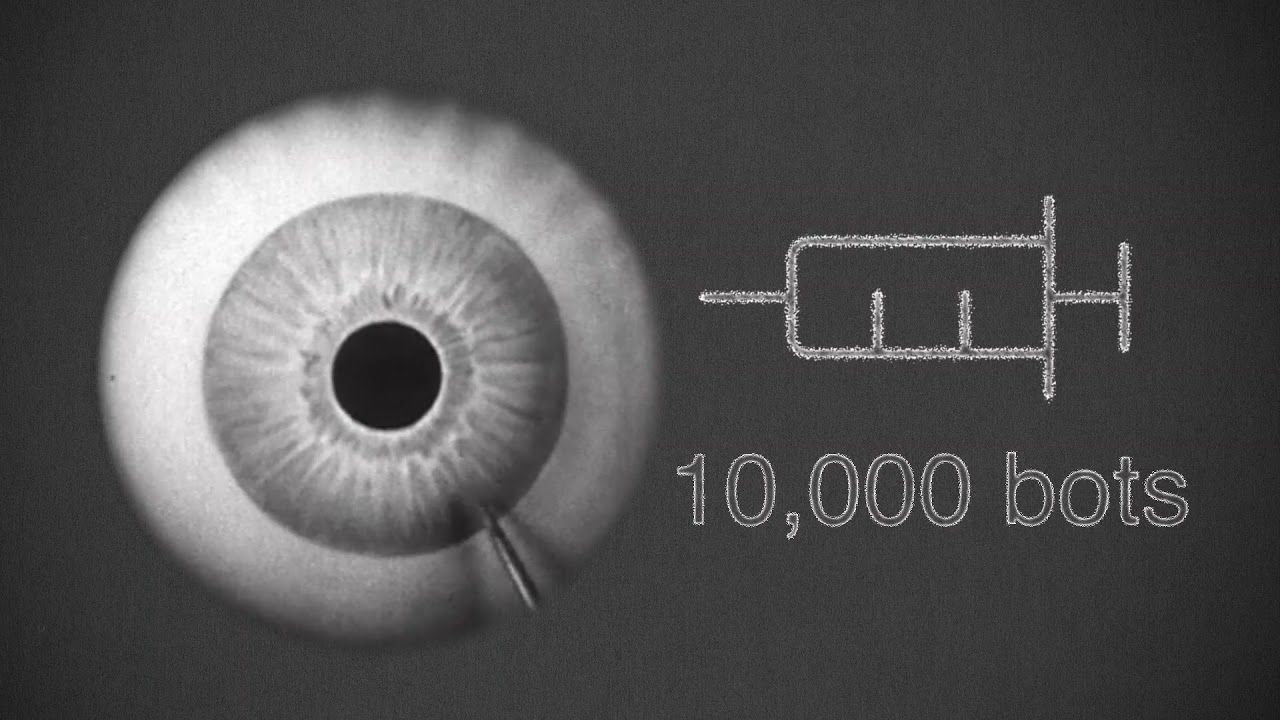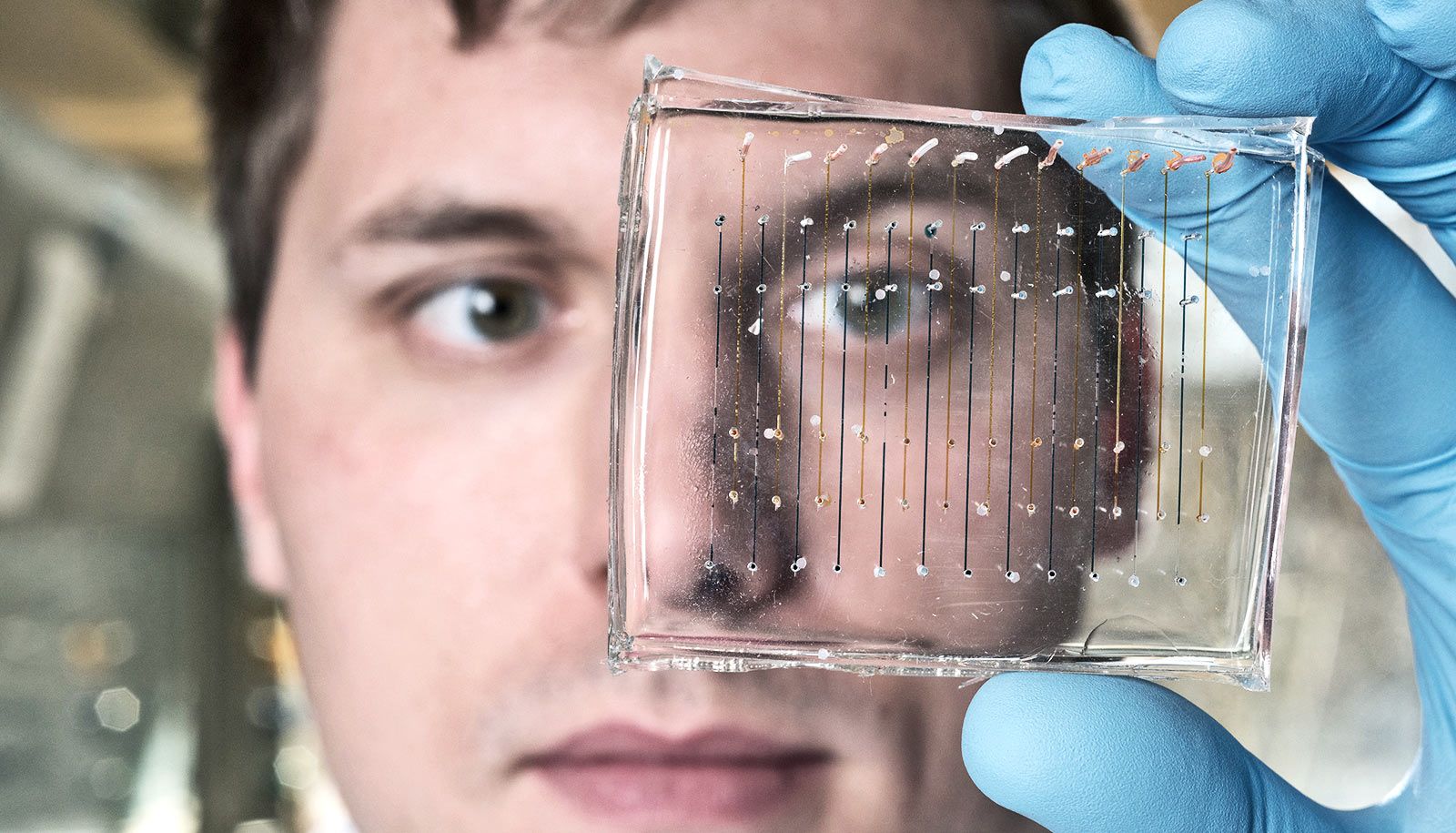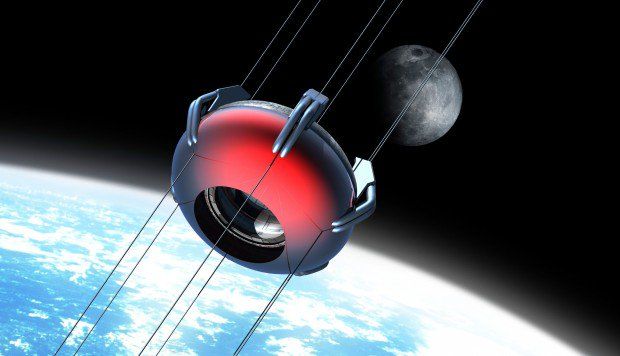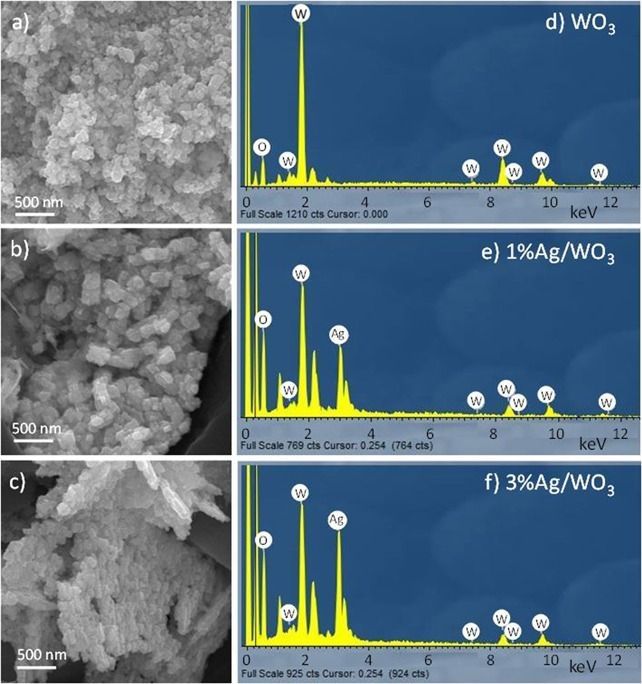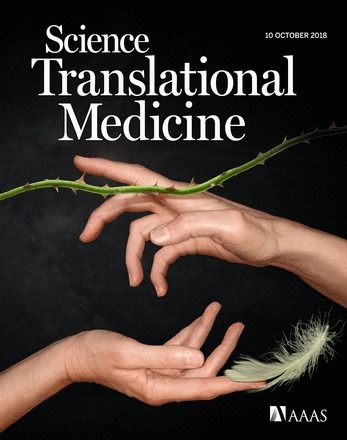Archive for the ‘nanotechnology’ category: Page 181
Nov 4, 2018
Rutgers researchers advance stem cell therapy with biodegradable scaffold
Posted by Genevieve Klien in categories: bioengineering, biotech/medical, life extension, nanotechnology, neuroscience
Rutgers scientists have created a tiny, biodegradable scaffold to transplant stem cells and deliver drugs, which may help treat Alzheimer’s and Parkinson’s diseases, aging brain degeneration, spinal cord injuries and traumatic brain injuries.
Stem cell transplantation, which shows promise as a treatment for central nervous system diseases, has been hampered by low cell survival rates, incomplete differentiation of cells and limited growth of neural connections.
So, Rutgers scientists designed bio-scaffolds that mimic natural tissue and got good results in test tubes and mice, according to a study in Nature Communications. These nano-size scaffolds hold promise for advanced stem cell transplantation and neural tissue engineering. Stem cell therapy leads to stem cells becoming neurons and can restore neural circuits.
Nov 4, 2018
Method spotlights best nanoparticles to deliver genetic drugs
Posted by Genevieve Klien in categories: biotech/medical, genetics, nanotechnology
The new method uses a red glow to screen hundreds of nanoparticles at once to find which could best deliver drugs into living cells.
Oct 28, 2018
In a Transhumanist Future, Everyday Could Be Halloween
Posted by B.J. Murphy in categories: bioengineering, biotech/medical, genetics, habitats, health, nanotechnology, transhumanism

In the spirit of Halloween, where ghouls, ghosts, and vampires walk among us, our perception of reality will soon transform as well, forever possessed by the specter of Transhumanism!
Last year, I wrote about how people could transform themselves into one of my favorite horror creatures—a real-life werewolf—using modern science and tech. This merely scratches the surface, however, in terms of how far an individual can go. In a Transhumanist future, you’ll be empowered to not only question the extent of your humanity but equally put those questions into action.
Continue reading “In a Transhumanist Future, Everyday Could Be Halloween” »
Oct 28, 2018
China has strongest fibre that can haul 160 elephants – and a space elevator?
Posted by Klaus Baldauf in categories: military, nanotechnology
Scientists say just 1 cubic centimetre of the carbon nanotube material won’t break under the weight of more than 800 tonnesTsinghua University researchers are trying to get the fibre into mass production for use in military or other areas.
Oct 26, 2018
DNA ‘dances’ in first explanation of how genetic material flows through a nucleus
Posted by Xavier Rosseel in categories: biotech/medical, genetics, nanotechnology
“Previous work mostly focused on what was going on at the microscale of DNA,” says study co-author Michael Shelley, group leader for biophysical modeling at the Flatiron Institute’s Center for Computational Biology in New York City and co-director of the Courant Institute’s Applied Mathematics Laboratory at New York University. “People didn’t really think about what was going on at the larger scale.”
Shelley and colleagues simulated the motions of chromatin, the functional form of DNA inside the nucleus. Chromatin looks like beads on a string, with ball-like clusters of genetic material linked by strands of DNA. The researchers propose that molecular machines along the DNA cause segments of the chromatin to straighten and pull taut. This activity aligns neighboring strands to face the same direction. That alignment, in turn, results in a cascading waltz of genetic material shimmying across the nucleus.
The dancing DNA may play a role in gene expression, replication and remodeling, though the exact effects remain unclear, the researchers reported online October 22 in Proceedings of the National Academy of Sciences.
Oct 25, 2018
Regenerage — Spinal Cord Regeneration — Venga la Alegria — TV Azteca — Bioquark Inc.
Posted by Ira S. Pastor in categories: bioengineering, biotech/medical, chemistry, disruptive technology, DNA, futurism, genetics, health, nanotechnology, neuroscience
 Wonderful to see the continuing progress of Mr. Omar Flores, with the support of his lovely wife, actress Mayra Sierra, today on the Venga la Alegria (VLA) show on TV Azteca (http://www.aztecauno.com/vengalaalegria) — The importance of an integrated approach to curing spinal cord injury including family, physical therapists, and the medical team at Regenerage (https://regenerage.clinic/)
Wonderful to see the continuing progress of Mr. Omar Flores, with the support of his lovely wife, actress Mayra Sierra, today on the Venga la Alegria (VLA) show on TV Azteca (http://www.aztecauno.com/vengalaalegria) — The importance of an integrated approach to curing spinal cord injury including family, physical therapists, and the medical team at Regenerage (https://regenerage.clinic/)
Oct 16, 2018
Molecular semiconductors could be the future of electronics, and this new technique offers a way to mass produce them
Posted by Genevieve Klien in categories: materials, nanotechnology
Visions for what we can do with future electronics depend on finding ways to go beyond the capabilities of silicon conductors. The experimental field of molecular electronics is thought to represent a way forward, and recent work at KTH may enable scalable production of the nanoscale electrodes that are needed in order to explore molecules and exploit their behavior as potentially valuable electronic materials.
Oct 15, 2018
Photo-catalytic Killing of HeLa Cancer Cells Using Facile Synthesized Pure and Ag Loaded WO3 Nanoparticles
Posted by Genevieve Klien in categories: biotech/medical, genetics, health, nanotechnology
The cancer is a group of diseases characterized by the uncontrolled growth and spread of abnormal cells, and in most of the cases develop into malignant masses of tissues called tumors, and it is the leading causes of mortality and a major public health challenge worldwide. In normal body, genes in the cell nucleus, containing long strings of DNA (deoxyribonucleic acid) regulate the controlled division and function of cells and any damage to DNA causes the mutation of genes, which in turn triggers the uncontrolled division of abnormal cells, leading to the damage of vital organs. Cancer cells can detach from the original mass of tumor and migrate to new locations through blood and lymphatic system and also cancer cells produce enzymes that are capable of breaking the normal cells. For cancer diagnostics, the conventional histopathological and radiological examinations are still used for evaluating the clinical and pathologic staging, needed for cancer treatments. Depends on the stage of cancer development, different treatment options like chemotherapy, radiation therapy, stem cell transplant, immunotherapy, hormone therapy, targeted drug therapy and surgery are advised. The major disadvantages of the available advanced treatment options include non localized invasion to other body parts, intolerable cytotoxicity, unsystematic distribution of antitumor agents, immune to chemical agents, low bioavailability and limited option to evaluate the tumor cell response to therapies4,5. In spite of the drawbacks of these advanced treatment options, cancer is curable if it is diagnosed at an early stage.
Phototherapy has been used for the treatment of jaundice, cancer, dermatological conditions, and ophthalmological disorders by simply using the light of certain selected wavelength. Photodynamic therapy, on the other hand is a method of photosensitizing the action of drugs to kill cancer cells, but the major drawback of this treatment is that most of the drugs used for photodynamic therapy remain activated for a long time, leading to overdose to damage non cancer cells. In the photo-catalytic process, no drug is used, instead the nontoxic semiconductor photo-catalyst like WO3 generates electron hole pairs, when it is exposed to the light of appropriate wavelength and these photo-generated charge carriers mediate oxidation and reduction reactions in the cancer cell to eliminate them.
Oct 13, 2018
A nano stress reliever for sepsis
Posted by Genevieve Klien in categories: nanotechnology, neuroscience, particle physics
A peroxide scavenger nanoparticle reduces systemic inflammation in mouse models.
With 19 million cases per year worldwide, sepsis is one of the most life-threatening conditions in the intensive care unit. However, to date, there is no specific and effective treatment. Oxidative stress has been shown to play a major role in sepsis pathogenesis by altering the systemic immune response to infections, which, in turn, may lead to multiorgan dysfunction and cognitive impairment. Here, Rajendrakumar et al. developed a nanoparticle-based peroxide scavenger treatment for reducing oxidative stress during sepsis.
To produce the nanoassembly, the authors first developed a water-soluble nanoparticle core containing an active peroxide scavenger and a protein that stabilizes the scavenger and improves its biocompatibility. The nanoparticle core was then coated with a polymer material conjugated with mannose to help the final nanoassembly target inflammatory immune cells through the mannose receptor on the immune cell surfaces. The authors first confirmed in cell cultures that the nanoassembly can selectively reduce hydrogen peroxide–mediated free radical production with minimal toxicity. In cultures, immune cells demonstrated enhanced intracellular uptake of the particles and reduced production of inflammatory markers during activation. To demonstrate the therapeutic efficacy in vivo, the authors carried out three sets of animal studies. In the first set, the nanoassembly was shown to reduce locally induced tissue inflammation and prevent inflammatory immune cell infiltration.
